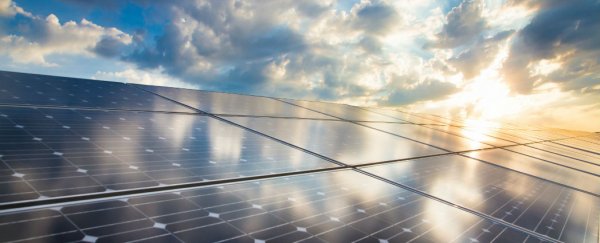A new type of solar cell can convert liquid water into clean hydrogen fuel 10 times more effectively than any other technology, and uses 10,000 times less precious material in the process.
Invented by researchers in the Netherlands, the secret to these new prototype solar cells are gallium phosphide nanowires, which can split water into its hydrogen and oxygen components far more cheaply and efficiently than the batteries and semiconductor materials that have been used in the past.
The efficiency of solar cell technology has improved dramatically over the past decade, and is now providing Germany with at least half its national energy requirements. And earlier this year in the Netherlands, it was announced that a tiny, 70-metre stretch of road covered in solar cells generated enough electricity to power an household for a year.
Over the past few years, scientists have been figuring out how to take things one step further by using solar cells to produce both fuel and electricity. The dream is one day we'll be using nothing but the boundless energy of the Sun to not only power our homes, but our cars, trains, and buses too.
Previous studies have shown that connecting an existing silicon solar cell to a water-splitting battery can produce hydrogen fuel, but it's certainly not a cheap enough process to be a realistic alternative. The most promising option is using some kind of semiconductor material that can convert sunlight into an electrical charge while splitting water into useable components, like an all-in-one solar fuel cell, but semiconductor materials aren't cheap either.
A team Eindhoven University of Technology investigated the potential of gallium phosphide (GaP), which is a compound of gallium and phosphide that's also used in the production of red, orange, and green-coloured LED lights, and has shown great potential in terms of its electrical properties. But gallium phosphide is expensive to produce, and when used in big, flat sheets, it's not capable of absorbing sunlight as efficiently as needed for a viable solar cell system. So the researchers tried producing a grid of tiny gallium phosphide nanowires measuring 90 nanometres thick and 500 nanometers long, and integrated them with existing solar cell technology.
Not only did they end up using 10,000 less gallium phosphide than if they'd used it to build a flat surface, but they discovered a whole new way to make solar fuel. "This immediately boosted the yield of hydrogen by a factor of 10 to 2.9 percent," the press release explains. "A record for GaP cells, even though this is still some way off the 15 percent achieved by silicon cells coupled to a battery."
The team argues that it's not just the yield we should be looking at when it comes to producing solar fuel, but the cost of the system, because if it's not cheaper than what we already get from fossil fuels, no one's going to use it no matter how much better for the environment it is. Their challenge now is to figure out how to increase the yield of their gallium phosphide grids so their solar cells can meet this 15 percent battery yield.
"For the nanowires we needed 10,000 less precious GaP material than in cells with a flat surface. That makes these kinds of cells potentially a great deal cheaper," lead researcher Erik Bakkers says. "In addition, GaP is also able to extract oxygen from the water - so you then actually have a fuel cell in which you can temporarily store your solar energy. In short, for a solar fuels future we cannot ignore gallium phosphide any longer."
The results have been published in Nature Communications.
